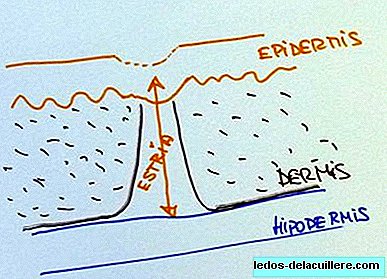
The feeding patterns of some children between 3 and 5 years of age are somewhat inconsistent. My daughter Gabriela (5), for example, there are days that she eats everything that falls into her hands and others that rejects everything we offer her. My husband and I have had a hard time not worrying. We were wondering if Gabriela would be eating "enough".
The pediatrician explained that, regardless of whether our children like to eat more or less, they will have specific preferences for certain foods at this age, and they may change from one day to the next. He suggested that, as disconcerting as the fact that our daughter despised a food she loved only two days ago seemed to us, it would be better if we did not make it a mountain. In short, he recommended that we allow Gabriela to choose from the supply of available foods, also encouraging her to try new foods, offering small amounts instead of insisting that she eat.
The pediatrician also proposed some general indications to detect if our children eat “enough”. We take note and here we share them with you. * It is convenient to offer small quantities and give more only if the child asks for it. Here are some "custom-made" amounts of a child of this age: half a liter of milk or fruit juice; ½ cup of cottage cheese or yogurt; 60 grams of hamburger meat; 1 toast; 4 tablespoons of vegetables; ½ cup of cereal; 60 grams of chicken; 1 teaspoon margarine
It is not recommended that the child bite too many times between meals; If this happens, it is better to offer healthy foods instead of soft drinks, sweets, pastries or overly salty or fatty foods. Chopping between meals not only detracts from appetite for main meals but also encourages tooth decay. To minimize the risk of tooth decay and prevent the child from consuming too many calories, some nutritious alternatives are: fruit and fruit juices; carrot, celery or cucumber sticks; yogurt; toast and bran muffins; small chicken sandwiches; Oatmeal Cookies; cheese.
Never use food as a way to reward good behavior.
Make sure our child is hungry or thirsty when he asks us for food or drink. If we detect that what he wants, deep down, is our attention, hug him, talk to him or play with him, but not use food as a substitute for attention.
Do not allow the child to eat while playing, listen to a story or watch TV. If you feed in this way, it is easy for you to continue eating without realizing it despite being full.
We, the parents, must learn the amount of calories contained in the different foods and control the amount of calories our child consumes on an average day. A child between 4 and 5 years old should consume 900 to 1800 calories daily or about 80 calories per kilo of weight.
Finally, if our son refuses to eat, he is very likely not hungry. We must also consider the possibility that our child is using food as a way of exercising control. Especially on days when you are very negative, you will resist any attempt to make him eat. When this happens, we should not force it. Even in the days of greatest negativism, he will not starve and, if he were to lose weight, it would be very little.
Anyway, if we find that our child is very heartbroken for more than a week or has other symptoms of illness, such as fever, nausea, diarrhea or weight loss, immediately consult the pediatrician.












